Nariman Narimanov
Nariman Karbalayi Najaf oglu Narimanov (Azerbaijani: Nəriman Kərbəlayi Nəcəf oğlu Nərimanov, Russian: Нарима́н Кербелаи Наджа́ф оглу Нарима́нов; 14 April [O.S. 2 April] 1870 – 19 March 1925) was an Azerbaijani Bolshevik revolutionary, writer, publicist, politician and statesman. For just over one year beginning in May 1920, Narimanov headed the government of Soviet Azerbaijan. He was subsequently elected chairman of the Union Council of the Transcaucasian SFSR. He was also Party Chairman of the Central Executive Committee of the Soviet Union from 30 December 1922 until the day of his death.
Nariman Narimanov Nəriman Kərbəlayi Nəcəf oğlu Nərimanov | |
|---|---|
 | |
| Minister of Foreign Affairs of Azerbaijan SSR | |
| In office May 1920 – 2 May 1921[1] | |
| President | Grigory Kaminsky (First Secretary of Azerbaijan Communist Party) |
| Preceded by | Fatali Khan Khoyski (ADR) |
| Succeeded by | Mirza Davud Huseynov |
| Chairmen of the Council of People's Commissars | |
| In office May 1921 – April 1922 | |
| Preceded by | Office created |
| Succeeded by | Gazanfar Musabekov |
| Personal details | |
| Born | 14 April [O.S. 2 April] 1870 Tiflis, Russian Empire |
| Died | 19 March 1925 (aged 54) Moscow, Russian SFSR |
In the realm of literature, Narimanov translated into Turkic Nikolai Gogol's The Government Inspector and wrote many plays, stories and novels, such as Bahadur and Sona (1896). He was also the author of the historical trilogy, Nadir-Shah (1899).
One of the central districts and one of the busiest metro stations in Baku, together with a number of streets, parks and halls all over Azerbaijan, as well as Azerbaijan Medical University, are named after him. In the Lankaran region, there is a town named Narimanabad in his honor. There are also towns named after him in other post-Soviet states, mainly in Russia.
Biography
Early years
Nariman Narimanov was born on 14 April (2 April O.S.) 1870 in Tiflis, Georgia, then part of the Russian Empire into an ethnic Azerbaijani family. The Narimanov family were middle-class merchants and were able to send their son to the Gori Teachers Seminary, from which he graduated.[2] He went on to attend medical school at "Imperial Novorossiya University" (present-day "Odessa University"), graduating in 1908.[2]
As a young man, Narimanov gained notice as a writer in Azerbaijan even before the revolution of 1905-1907, publishing novels which advocated the abandonment of tired customs and religious superstitions.[2] He simultaneously taught school in the village of Gizel-Adjal, Tiflis Province, where he became closely acquainted with the hard life of the local peasantry. Narimanov was one of the first activists of young Turkic literature. He translated into Turkic Gogol's Inspector and wrote many plays, stories and novels; the most well known among them being the novel, Bahadur and Sona (1896), and a historical trilogy, Nadir-shah (1899).
During the 1905 Revolution, Narimanov joined the Bolshevik party, took an active part and led the student movement in Odessa. He subsequently became one of the organizers of the Social Democratic Party. For these activities, Narimanov was arrested in 1909 and sentenced to five years' internal exile in Astrakhan.[2]
Political career
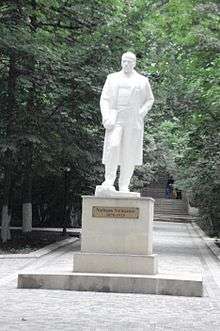
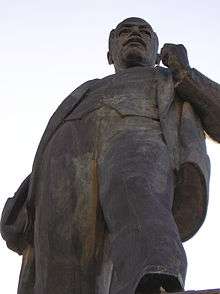
After the October Revolution of 1917, Nariman Narimanov became the chairman of the Azerbaijani social democratic political party, Hummet (Endeavor), the forerunner of the Communist Party of Azerbaijan.[2] He did not run for election on the Hummet slate, however, and was thus not a member of the Baku Soviet during the brief reign of the Baku Commune of 1918.[2] He was appointed People's Commissar of National Economy by the Baku Soviet, however.[2]
Following the fall of the Baku Soviet, Narimanov managed to escape the city to Astrakhan, thereby avoiding the grim fate of the 26 Baku Commissars.[2] He was there appointed chief of the Near East Division of the People's Commissariat of Foreign Affairs of Soviet Russia, later moving to a position as Deputy People's Commissar in the Commissariat of National Affairs.[2] Narimanov was an advocate of national autonomy within a federated Soviet structure and is widely viewed as being instrumental in the July 1919 decision of the Politburo to recognize Azerbaijan as an independent Soviet Republic.[2]
In 1920, Narimanov was appointed the chairman of the Azerbaijani Revolutionary Committee (Azrevkom) and, shortly thereafter, the Chairman of the Council of People's Commissars' (Sovnarkom) of the Azerbaijani Soviet Republic. In April and May 1922, he took part in the Genoese Conference as a member of the Soviet delegation. In 1922, he was elected the chairman of the Union Council of the Transcaucasian Federation. On 30 December 1922, the first session of the Central Executive Committee of the USSR elected Narimanov as one of the four chairpersons of the Central Executive Committee of the USSR.[2]
In April 1923, Narimanov was elected as a candidate for the Central Committee of the RKP(b) (Russian Communist Party of Bolsheviks). The charismatic moderate nationalist clashed with Joseph Stalin's close associate Sergo Ordzhonikidze, who led the Communist Party in Transcaucasia. As a result of this conflict, Ordzhonikidze had Narimanov transferred to posts in Moscow to remove him from the Caucasus.
Death and legacy
Narimanov died in bed of a heart attack on 19 March 1925.[2] He was 54 years old at the time of his death. His remains were cremated and his ashes buried in the Kremlin Wall Necropolis.
Leon Trotsky called his death the second biggest loss for the Eastern world after that of Lenin.[3] Sergo Ordzhonikidze described Narimanov as "the greatest representative of our party in the East".[4]
During the Ezhovshchina of the late 1930s, Narimanov was posthumously denounced along with all other members of Hummet for their alleged nationalism.[2] This action was reversed after the liberalization which followed the death of Joseph Stalin in 1953 and Narimanov was again celebrated as a leading figure in the history of Azerbaijani communism, though in 1959, official CCCPSU policy was still to downplay Narimanov's role and stress that of Shaumian within the Azerbaijani context. It was only in 1972 that Narimanov was fully rehabilitated within his homeland.[2][5]
Narimanov was survived by his wife Gulsum and by his son Najaf, who joined the Red Army in 1938 and graduated from the Kiev Higher Military Radio-Technical Engineering School in 1940. He became a member of the Communist Party in 1942. During the Great Patriotic War, he was the commander of a tank division and took part in the Battle of Stalingrad and the Battle of the Dnieper before being killed in action near Volnovakha in Ukraine.



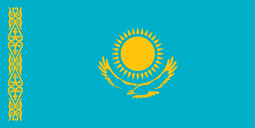

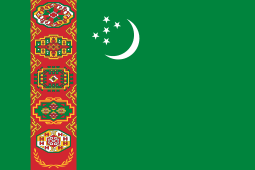

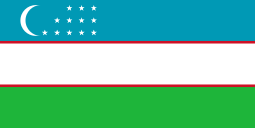
Footnotes
- "Presidential Library. Nariman Narimanov" (PDF). p. 72. Retrieved 2010-07-09.
- George Jackson with Robert Devlin, "Narima Nejefoghi Narimanov" in Dictionary of the Russian Revolution. Westport, CT: Greenwood Press, 1989; pp. 399-400.
- Leon Trotsky on the memory of Myasnikov, Mogilevskogo, and Artabekova
- The Great Soviet Encyclopedia, 1939, p. 160.
- Jamil Hasanli, Khrushchev's Thaw and National Identity in Soviet Azerbaijan 1954-1959 p436]
- Qori seminariyasının Azərbaycan şöbəsinin yaradıcısı
Further reading
- Audrey Altstadt, The Azerbaijani Turks: Power and Identity Under Russian Rule. Stanford, CA: Stanford University Press, 1992.
- The Great Soviet Encyclopedia. Third edition. Moscow: 1970-77.
